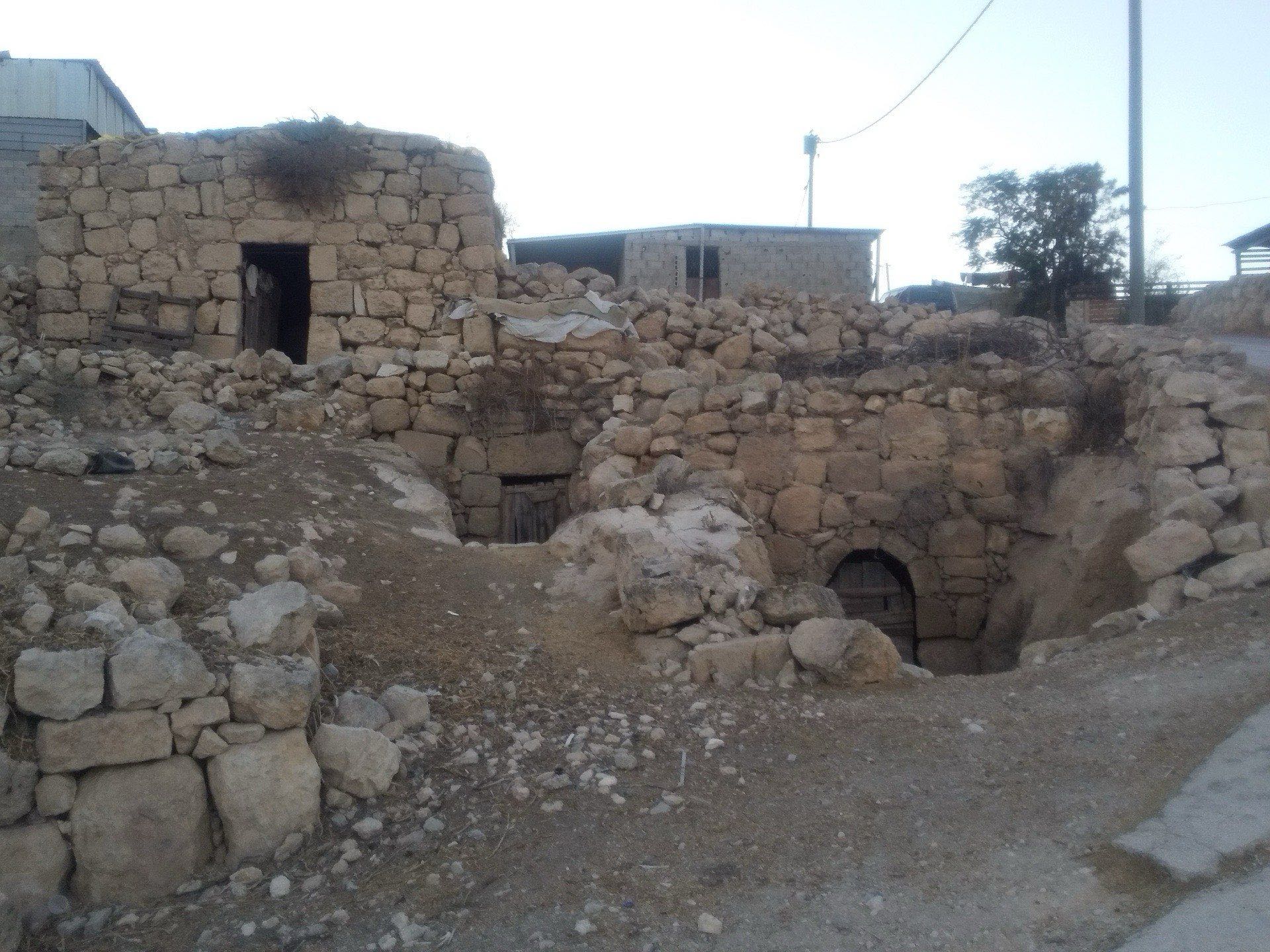The land is rock. Not rocks, but sheets of rock. Not dirt punctuated by many rocks, but sheets of rock marked with gaps and divots. Some big, some small. Some areas, the rock is polished from use. Other areas are rough. The sheets of rock can be so featureless that roads of safe passage are marked by stone walls or cairns.

On the sheets of rock are boulders and smaller and smaller rocks, until at last sand. The wind-blown sand fills the dimples and crevasses in the rock sheet. The largest crevasses filled with sand support plant growth. In these crevasses Palestinians have gardens. One row of onions, or in bigger ones, a more conventional garden of five or six rows.
Rocks are used to build walls, fences, buildings, ovens, and terraces. Walls that are precisely built straight with trim sides, as though built for a formal garden. Also, there are rough-hewn walls. These are functional, but not works of art. All are built without mortar or cement by people who start building walls as soon as they are strong enough to lift even small rocks.
At times, big stones that are too big to lift, are positioned as the base of a soon to be wall. The wall is being built with manageable sized stones placed around them. Even slabs of rock, say six or seven feet by about four feet, are used by planting them on their end to form the backbone of a wall.
They present a jagged top that looks like some dinosaur's teeth coming out of the earth. Walls come in all heights, from terrace walls, well over a man's head, to walls little more than a row of rocks. These little walls may direct rains toward wells, or mixed with stone cairns, they may mark safe passage or a “roadway” across the rock.
The use of rock goes below the surface too. Cavities in the rock, from small cavities to walk in caves, find a use. Caves that make dry and rodent-free granaries are fitted with steel doors. Caves that are dry, wind free, and temperature moderated, become communal bed rooms. Caves are kitchens, work rooms, and storage areas. Small cavities are used for traditional ovens. Some caves have complete roofs, others need some amount of added roof. Some are walk-in, others require a ladder. Most have been enlarged and shaped over the generations. They have doors, roofs, and other features have been fashioned so that caves can fill multiple needs. Each family uses a variety of available caves but mostly they live in conventional above ground houses.
The rocks and the people grow together and shape one another. The relationship is beautiful, as are the rock structures and uses. The rock itself seems to come alive as the sun settles and night encroaches. The rock faces and hills start to glow and radiate a warm inviting red color.




No comments:
Post a Comment